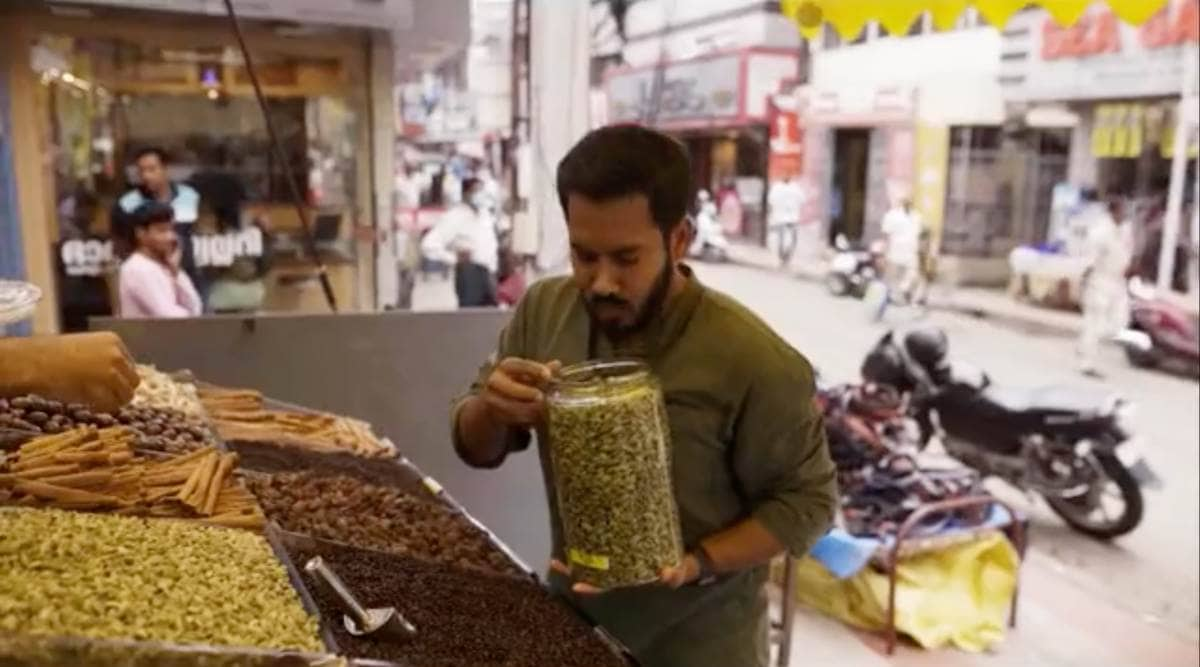 Videograb from 'The Land Of Flavours’ trailer
Videograb from 'The Land Of Flavours’ trailerWritten by Shirin Mehrotra
“Celebration”, “spirituality”, “abundance”, “spices” and “purity” are just some of the words I hear in the first five minutes of ‘The Land Of Flavours’, the first episode of a new series on Discovery Plus called The Journey Of India. Hosted by Amitabh Bachchan, the show is a celebration of India’s 75 years of Independence. The first episode, focused on Indian cuisine, is hosted by Chef Vikas Khanna.
What is Indian cuisine? And can it be aptly defined in a 45-minute episode? And what would we choose to show in these 45 minutes? Curious about these questions, I watched the episode. In the first segment, the audience is taken to Shri Krishna Mutt in Udupi, the town that has popularised and, to a certain extent, homogenised South Indian food in the rest of the country and the world by creating a monolithic vegetarian version of it at Udupi- and Darshini-style restaurants. This part emphasises the importance of sattvic food for the purity of mind and body while completely overlooking casteist biases that lie behind the concept. The Ayurvedic categorisation of food into sattvic, rajasic and tamasic is constructed upon the ideas of purity and pollution perpetuated by the Hindu caste system. In the hierarchy of consumption of food, a vegetarian meal without onion and garlic is rated higher than meat-centric meals, especially those that include beef, and are central to Dalit, Muslim and Christian food cultures in certain parts of the country.
A segment focusing on the Midday Meal Scheme features Akshaya Patra, the non-profit trust of ISKCON that provides school lunches across several states in India. “For the growth of any country I think nutrition is a very very important part of it,” says Padma Shri Chef Sanjeev Kapoor, who is on the consultative council of the organisation. The irony is that Akshaya Patra has been pushing its own religious beliefs onto the students by refusing to serve food cooked with onion and garlic, meat, fish or even eggs to school children despite the dietary guidelines by the National Institute of Nutrition (NIN), Hyderabad, which recommends minimum three eggs per week for every child.
Twenty minutes into the show we see the discussion moving, only slightly, towards meat. In the by-lanes of old Delhi, we revisit the story of one of the most well-known dishes that resulted from the Partition — butter chicken, a dish that Indians living abroad do not tire of claiming. What is surprising is how conveniently the cuisine that grew out of the Mughal empire, including dishes like kebabs, kormas and biryanis, and which inhabits the same lanes as butter chicken, is ignored.
The show tries to paint the clichéd picture of India as a “sone ki chidiya” (golden bird) with lines such as, “the evening meal is always celebratory in India”. Ideas of “abundance” and “prosperity” seem good on paper, but not when your country ranks 107 out of the 121 countries on the Global Hunger Index. “Feasting”, “togetherness” and “festivity” are welcome ideas, but not when minorities are lynched for eating beef. “Giving” and “sharing” make perfect sense in the context of food, but not when a 9-year-old Dalit boy is beaten to death for touching the water pot of his upper caste teacher.
When we talk about Indian food, we choose to talk about the axone of Nagaland but ignore the racial slurs meted out to the Naga people during the early days of Covid-19; we own the wazwan, but separate the Kashmiris from it as if the two exist in isolation. We look at the royal palaces and havelis of Rajasthan and are wowed by its “rich” Rajputana culture, while overlooking how the nomadic tribes and the less privileged scout for food in the drought-prone state. We talk about the “diversity” and “unity” of Indian food culture, but not about the equally divisive politics of it.
And what, amidst all of this, stands out is that the producers couldn’t find a single woman chef to talk about the vastness and depth of Indian cooking; in a country where almost all of the burden of domestic cooking is borne by women.
It’s 2022: By now, Indian food deserves much better representation.
Mehrotra is an independent food writer